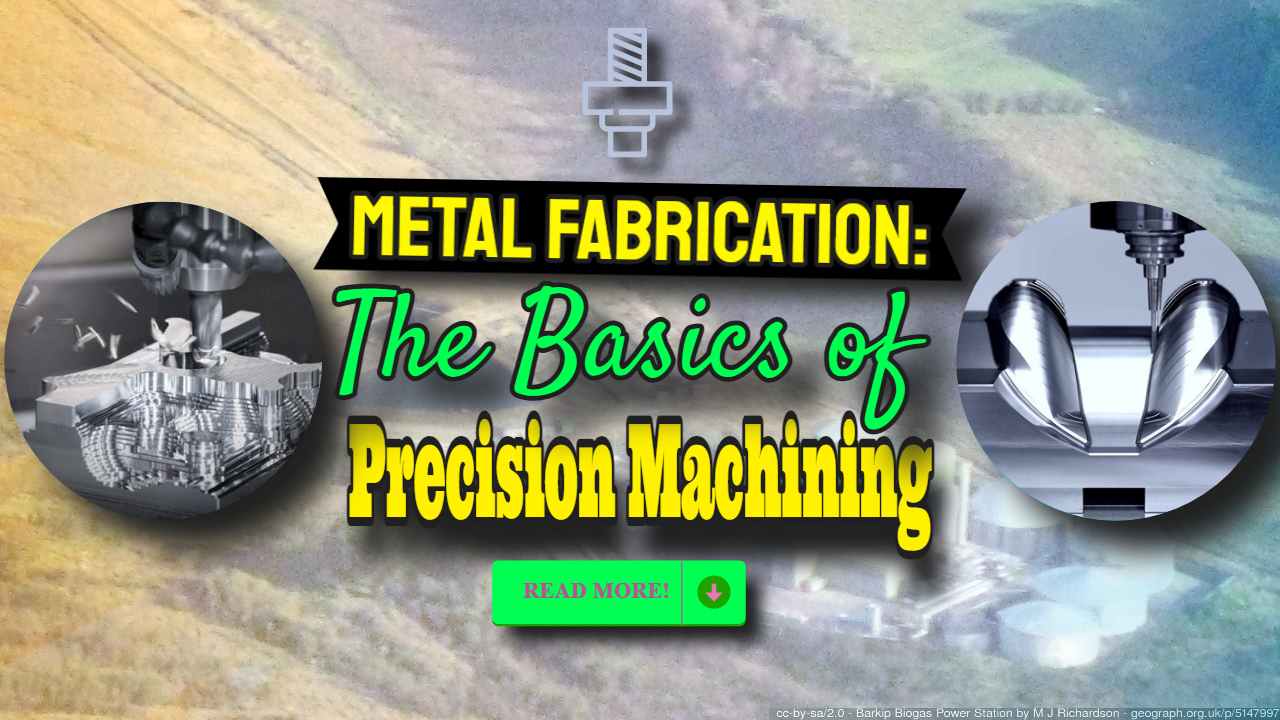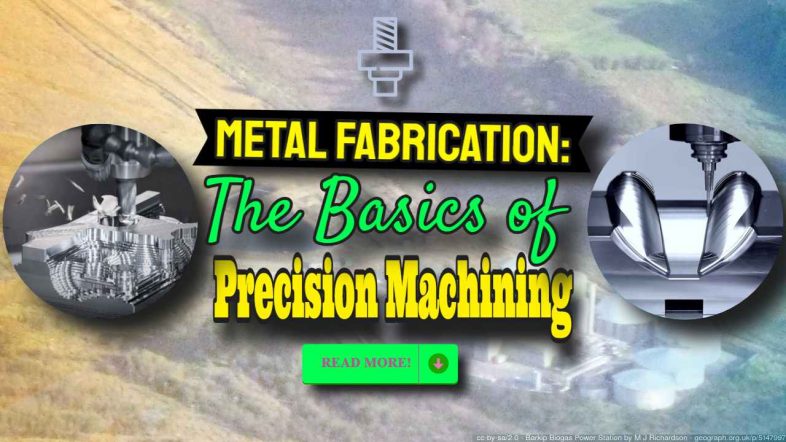Stay with us while we look at metal fabrication as a fundamental technology, one of the basics of precision machining and also essential to the AD Industry. This is one of our occasional articles in which we look at the basic foundations of current technology.
Without modern metal fabrication techniques such as metal stamping services providing sophisticated sludge pumping, biogas production would be impossible, let alone the high-technology of upgrading biogas and pressurizing the resulting biomethane.
Precision Machining
Precision machining is one of the most essential services in the manufacturing sector. Almost every component we use and depend on in our daily life was created using this service.
It is also known to support older technology and create components supporting the current technology developments. The art mainly involves three tasks: boring, turning and milling. Boring involves the drilling of holes in the material to create parts.
Turning machinery functions by rotating the material and using cutting tools to design the new parts. Milling, on the other hand, utilizes grinding and cutting devices to extract the material from the source.
That aid lets us discuss how precision metal stamping services work and the various tools involved.

How does it work?
Precision machining involves the conversion of raw products into finished products. Some of the most commonly used raw materials include ceramic, composites, metal, or plastic.
The process is further supported by two computer programs namely (CAM) computer-aided manufacturing and computer-aided design (CAD). These programs are behind the ability of the precision machine to achieve a high degree of tolerance.
It's also worth noting that most of these fine-featured products were just hand-drawn sketches in the initial stage.
What is precision machining used for?
The art is mostly used to create parts that require tight tolerances variation. Each of these pieces demands a high degree of accuracy that only a precision machine can offer.
If an item is made of several tiny parts, precision engineers ensure that the items are created to fit and function properly together. Likewise, this innovative technology can be used in the repair and restoration process.
When tools are used for long, they tend to wear and tear. Precision machining can help restore them to their original state.
What tools and materials are used?
As mentioned, precision machining utilizes several raw starter materials including bronze, glass, graphite, steel, and more. However, the art may also require a combination of tools for it to be successful.
These tools make precision cutting and complex removal of raw materials much easier. Most of these types of machinery are computer-controlled so that they can diligently create finely detailed components and piece parts.
Others utilize photochemical and high-speed robotics processes to ensure a high degree of accuracy for the end product. The following tools fit the above description.
1 – Lathes
Lathes work together with specific cutting tools to modify the workpiece. The machine capabilities vary, with the highest going up to 5 axis machining.
Some are computer-controlled to allow for a more intricate design. Lathes can also be modified to provide several functions based on your specific needs. Read more here https://www.mmsonline.com/articles/how-to-improve-machining-center-accuracy
2 – Mills
Milling machines are generally used for grinding, shaping, and cutting materials to size. They can be either horizontal or vertical.
Both the tool and the workpiece in a milling machine rotate to create the desired shape and dimensions. The process may cause heat and friction hence coolants and lubricants may be used.
3 – Swiss machines
Swiss machines are ideal for creating small parts. They are also effective at machining long and slender parts without causing any indentation. In fact, the machine can compose parts as tiny as 0.75 inches in diameter. It does so by securing the workpiece in place as the shaping tool rotates around it.
4 – Laser engraving
A laser machine is mainly used for etching and engraving marks on various tools like custom logos, QR codes, or serialization. The materials used are mainly plastic or aluminium. However, the laser must be mounted on a rotary attachment for it to function.
5 – Electrical discharge machines
EDMs machines come in two forms- sinker electrical discharge machining and wire electrical discharge machining. The sinker uses an electrode to cut the metal while the latter uses an electrically charged wire. Note that, the workpiece must be electrically conductive. Click here to read more.
Conclusion
Precision machining has proven to be beneficial in most businesses.
This is because of its ability to create finer and more accurate parts which most businesses depend on. Whether you are looking for large or small parts, this process can design parts following strict manufacturing guidelines and tight tolerance. To learn more about this process, take time to do your research.




